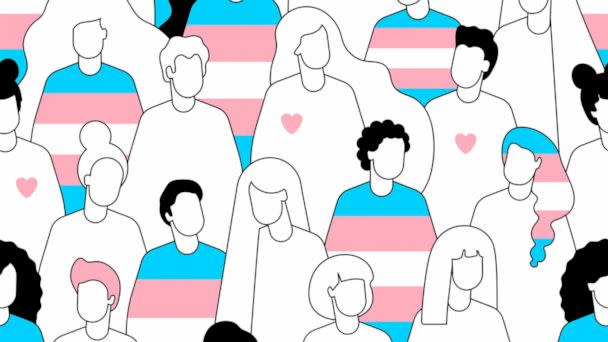What is gender dysphoria and what does transgender youth care consist of?

Across the country, Republican lawmakers have introduced legislation that restricts transgender health care for minors.
At least eight states have passed laws or policies restricting this care, and 23 more state legislatures are considering similar legislation of their own.
Medical experts say that understanding transgender identities, gender dysphoria and how gender-affirming treatments work is key to understanding the impact these bans may have on patients.
"When it becomes too political, it becomes more about paying attention to very short sentences, but not paying attention to nuance” said Dr. Hussein Abdul-Latif, a pediatric endocrinologist at the Children’s Hospital of Alabama with a special focus on gender care.
“And that's unfortunate, because this is not something that is very simple.”
Why do people undergo gender-affirming care?
Gender-affirming care can help treat gender dysphoria, which refers to the stress of being in a body that doesn’t feel like one’s own, according to the Diagnostic and Statistical Manual, Fifth Edition, which provides up-to-date information on mental health conditions.

People experiencing gender dysphoria may feel that their physical body does not match their inner sense of who they are or that they do not desire the gender identity typically associated with their assigned sex at birth.
This can cause distress, depression and anxiety, according to medical experts. However, being transgender is not a mental illness.
“There's not a blood test, there's not an MRI we can do to determine who's … dealing with dysphoria,” said Dr. Andrew Goodman, the medical director for Callen-Lorde, a community health center in Manhattan that specializes in LGBTQ health care. “We have to listen to people, and to trust them and what they're telling us.”
A national survey in 2015 by The National Center for Transgender Equality reported that of the more than 27,000 trans Americans who responded, 38% of them knew they were trans before 5 years old, and 60% knew they were trans before 10.
MORE: Transgender care targeted into adulthood in these states
Is gender diversity a new concept?
No. There is documentation of gender diverse individuals in a wide range of cultures around the world throughout history, dating back centuries.
Medical treatment for gender dysphoria, as it’s known today, was introduced in the early to mid-1900s in Germany.
Modern gender-affirming care is based on “decades of clinical experience and research and, therefore, they are not considered experimental, cosmetic or for convenience,” per the World Professional Association for Transgender Health standards of care.
What is gender-affirming care?
Gender-affirming care is about supporting someone’s identity, said Dr. Goodman. It helps align their physical appearance with their gender identity, and can include puberty blockers, hormone medications, and surgery.
Trans individuals often transition socially — by changing their name and pronouns, or dressing differently — before beginning any medications.
“I look for the need, the crisis… when the dysphoria really starts to intensify,” said Dr. Goodman, who explained this can be when a trans youth starts seeing puberty-related changes in their body.
MORE: Meet the team facing off against anti-LGBTQ groups at drag queen story hours
Puberty blockers are used in people who have not started or completed puberty. Pausing puberty allows children to explore their gender identity without the growth of permanent sex characteristics, Dr. Abdul-Latif explained.
Puberty blockers mimic the body’s natural hormone, called GnRH, which suppresses the release of testosterone for biological males or estrogen for biological females, according to the U.S. Department of Health and Human Services.
These are typically offered during the early stages of puberty, according to the Endocrine Society treatment guidelines. This stage of puberty can be determined by changes in the body such as enlargement in the testicles or breast bud formation. The average age for this developmental stage is 11-12 years old for biological males and 10-11 for biological females.

 Yahoo Autos
Yahoo Autos 